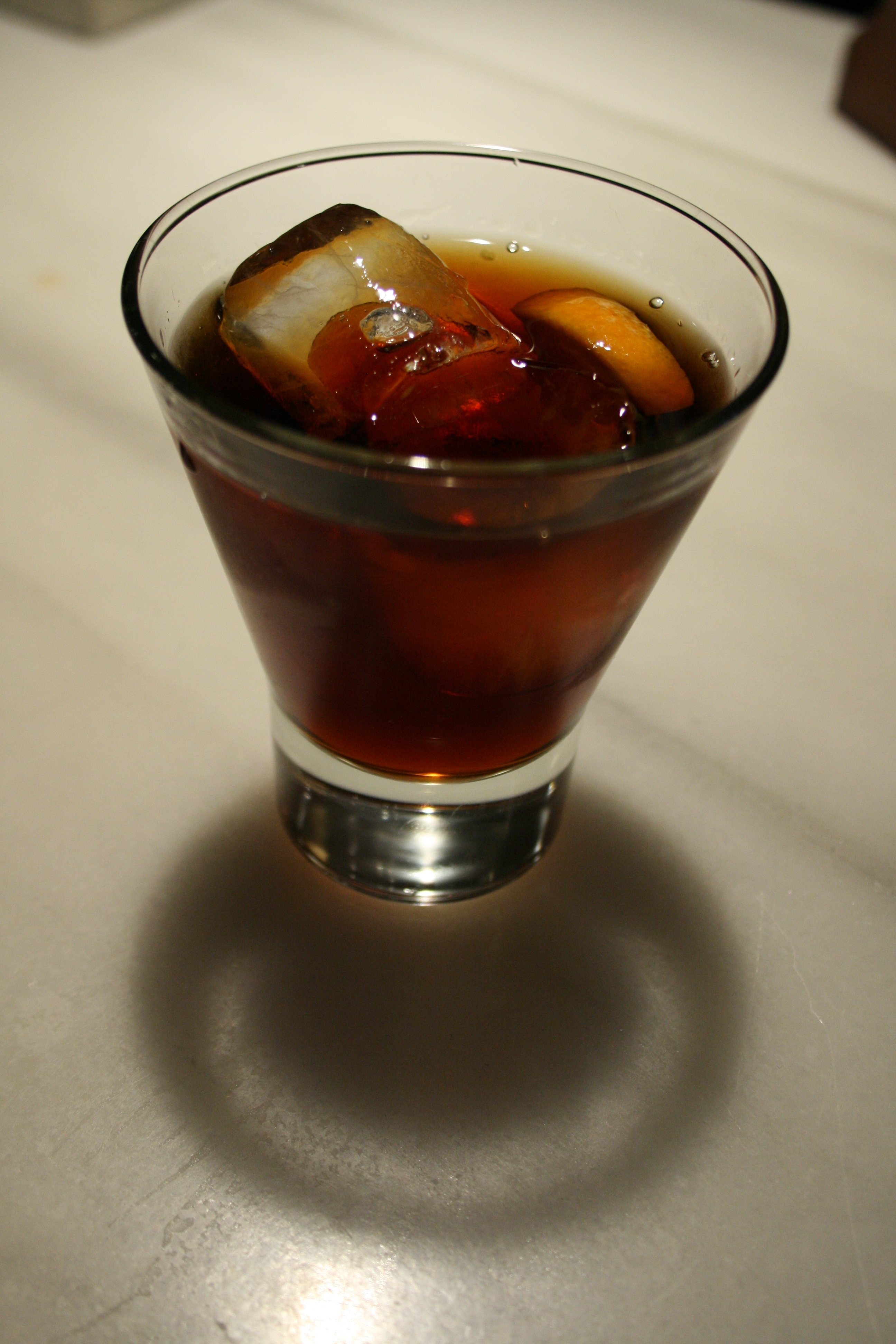|
Ginjinha
Ginjinha (), or simply ginja, is a Portuguese liqueur made by infusing ''ginja'' berries (sour cherry, ''Prunus cerasus austera'', the Morello cherry) in alcohol (aguardente) and adding sugar together with other ingredients, with cloves and/or cinnamon sticks being the most common. Ginjinha is served in a shot form with a piece of the fruit in the bottom of the cup. It is a favourite liqueur of many Portuguese and a typical drink in Lisbon, Alcobaça, Óbidos, Marvão, Covilhã and Algarve. The Serra da Estrela ginja, centered around Covilhã, has protected designation of origin. History The Ginjinha of in Lisbon was the first establishment in that city to commercialize the drink that gives its name to it. A Galician friar of the Church of Santo António, Francisco Espinheira, had the experience of leaving ''ginja'' berries in aguardente, adding sugar, water and cinnamon. The success was immediate and ginjinha became the typical drink of Lisbon. In the 2000s, the business ... [...More Info...] [...Related Items...] OR: [Wikipedia] [Google] [Baidu] |
Sour Cherry
''Prunus cerasus'' (sour cherry, tart cherry, or dwarf cherry) is an Old World species of ''Prunus'' in the subgenus ''Prunus subg. Cerasus, Cerasus'' (cherries). It has two main groups of cultivars: the dark-red Morello cherry and the lighter-red Amarelle cherry. The sour pulp is edible. Description The tree is smaller than the sweet cherry (growing to a height of 4–10 m), has twiggy branches, and its crimson-to-near-black cherries are borne upon shorter stalks. It is closely related to the sweet cherry (''Prunus avium''), but has a fruit that is more acidic. Its fruit persistence (botany), persists for an average of 17.4 days, and always bears 1 seed per fruit. Fruits average 84.9% water, and their dry matter, dry weight includes 39.7% carbohydrates and 1.0% lipids. Taxonomy ''Prunus cerasus'', a tetraploid with 2n=32 chromosomes, is thought to have originated as a natural hybrid between ''Prunus avium'' and ''Prunus fruticosa'' in the Iranian Plateau or Eastern Europe ... [...More Info...] [...Related Items...] OR: [Wikipedia] [Google] [Baidu] |
Oeste Subregion
Comunidade Intermunicipal do Oeste (; in English: Intermunicipal Community of the West) is an administrative division of Portugal, located on the country's West and Tagus Valley. The population in 2011 was 362,540, in an area of . Caldas da Rainha serves as the seat of Oeste. The law establishing the framework for intermunicipal communities and metropolitan areas was approved by the Assembly of the Republic (Assembleia da República) on 27 August 2008. On 25 November 2008, the Associação de Municípios do Oeste (Association of Municipalities of the West), by the approval of the municipal assemblies ('' assembleias municipais'') of each of its constituent municipalities, converted itself into the Comunidade Intermunicipal do Oeste. The law formally establishing the names, borders, and duties of the intermunicipal communities and metropolitan areas was approved by the Assembly of the Republic on 12 September 2013. Oeste is the successor to Associação de Municípios do Oeste (A ... [...More Info...] [...Related Items...] OR: [Wikipedia] [Google] [Baidu] |
Portuguese Liqueurs
Portuguese may refer to: * anything of, from, or related to the country and nation of Portugal ** Portuguese cuisine, traditional foods ** Portuguese language, a Romance language *** Portuguese dialects, variants of the Portuguese language ** Portuguese man o' war, a dangerous marine animal ** Portuguese people, an ethnic group See also * * ''Sonnets from the Portuguese'' * "A Portuguesa", the national anthem of Portugal * Lusofonia * Lusitania Lusitania (; ) was an ancient Iberian Roman province encompassing most of modern-day Portugal (south of the Douro River) and a large portion of western Spain (the present Extremadura and Province of Salamanca). Romans named the region after th ... * {{disambiguation Language and nationality disambiguation pages ... [...More Info...] [...Related Items...] OR: [Wikipedia] [Google] [Baidu] |
List Of Portugal Food And Drink Products With Protected Status
A number of food and drink products from Portugal have been granted Protected Geographical Status under European Union law and UK law through the Protected Designation of Origin (PDO), Protected Geographical Indication (PGI) or Traditional Speciality Guaranteed (TSG) regimes. The legislation is designed to protect regional foods and came into force in 1992. In 2021, the following indications were registed: * 94 Portuguese PDOs or DOP (''Denominação de Origem Protegida'') * 85 Portuguese PGIs or IGP (''Indicação Geográfica Protegida'') * 1 Portuguese TSGs (Traditional Speciality Guaranteed) or ETG (''Especialidade Tradicional Garantida'') Do not confuse with DOC ('' Denominação de Origem Controlada''), which is a Portuguese national classification scheme. This list is sourced from the official index published by the European Commission and is not complete. Olive oil and olives Olive oil * Azeite de Moura (PDO) * Azeite de Trás-os-Montes (PDO) * Azeite do Alentejo I ... [...More Info...] [...Related Items...] OR: [Wikipedia] [Google] [Baidu] |
Protected Geographical Indications In The European Union
Three European Union schemes of geographical indications and traditional specialties, known as protected designation of origin (PDO), protected geographical indication (PGI), and traditional speciality guaranteed (TSG), promote and protect names of agricultural products and foodstuffs, wines and spirits. Products registered under one of the three schemes may be marked with the logo for that scheme to help identify those products. The schemes are based on the legal framework provided by the EU Regulation No 1151/2012 of the European Parliament and of the Council of 21 November 2012 on quality schemes for agricultural products and foodstuffs. This regulation applies within the EU as well as in Northern Ireland. Protection of the registered products is gradually expanded internationally via bilateral agreements between the EU and non-EU countries. It ensures that only products genuinely originating in that region are allowed to be identified as such in commerce. The legislation fir ... [...More Info...] [...Related Items...] OR: [Wikipedia] [Google] [Baidu] |
Alcobaça, Portugal
Alcobaça () is a Portugal, Portuguese city and municipality in the Intermunicipal communities of Portugal, intermunicipal community Oeste (intermunicipal community), Oeste and the region Oeste e Vale do Tejo, in the historical province of Estremadura Province (1936–1976), Estremadura, and in the Leiria District. The city grew along the valleys of the rivers Alcoa River, Alcoa and Baça, from which it derives its name. The municipality population in 2011 was 56,693, in an area of . The city proper has a population of 15,800 inhabitants. The city of Alcobaça became notable after the first king of Portugal, Afonso I of Portugal, Afonso Henriques, decided to build a church to commemorate the Conquest of Santarém from the Moors in 1147. The church later evolved into the Alcobaça Monastery, Monastery of Alcobaça, one of the most magnificent gothic architecture, Gothic monuments in the country. In the church are the tombs of Peter I of Portugal, Pedro I of Portugal and his murdered ... [...More Info...] [...Related Items...] OR: [Wikipedia] [Google] [Baidu] |
Lisbon Region
Lisbon Region () is one of the seven NUTS II designated regions of Portugal, which coincides with the NUTS III subregion Lisbon Metropolitan Area. The region covers an area of 3001.95 km2 (the smallest region on mainland Portugal) and includes a population of 2,815,851 inhabitants according to the 2011 census (the second most populated region in Portugal after the Norte region), a density of 1039 inhabitants/km2. Considered as representing the Lisbon Metropolitan Region. It is a region of significant importance in industry (light and heavy), services, and it is highly urbanized. The gross domestic product (GDP) of the region was 73.3 billion euros in 2018, accounting for 36% of Portugal's economic output. GDP per capita adjusted for purchasing power was 30,200 euros or 100% of the EU27 average in the same year. The GDP per employee was 92% of the EU average. History Prior to 2002, the area was included within the NUTS II region of Lisbon and Tagus Valley (that also inc ... [...More Info...] [...Related Items...] OR: [Wikipedia] [Google] [Baidu] |
Anthony Of Padua
Anthony of Padua, Order of Friars Minor, OFM, (; ; ) or Anthony of Lisbon (; ; ; born Fernando Martins de Bulhões; 15 August 1195 – 13 June 1231) was a Portuguese people, Portuguese Catholic priest and member of the Order of Friars Minor. Anthony was born and raised by a wealthy family in Lisbon, Portugal, and died in Padua, Italy. Noted by his contemporaries for his powerful preaching, expert knowledge of scripture, and undying love and devotion to the poor and the sick, he was one of the most quickly canonization, canonized saints in church history, being canonized less than a year after his death. He was proclaimed a Doctor of the Church by Pope Pius XII on 16 January 1946. Life Early years Anthony was born Fernando Martins de Bulhões in Lisbon, Portugal. While 15th-century writers state that his parents were Vicente Martins and Teresa Pais Taveira, and that his father was the brother of Pedro Martins de Bulhões, the ancestor of the Bulhão or Bulhões family, ... [...More Info...] [...Related Items...] OR: [Wikipedia] [Google] [Baidu] |
Friar
A friar is a member of one of the mendicant orders in the Catholic Church. There are also friars outside of the Catholic Church, such as within the Anglican Communion. The term, first used in the 12th or 13th century, distinguishes the mendicants' itinerant apostolic character, exercised broadly under the jurisdiction of a superior general, from the older monastic orders' allegiance to a single monastery formalized by their vow of stability. A friar may be in holy orders or be a non-ordained brother. The most significant orders of friars are the Dominicans, Franciscans, Augustinians, and Carmelites. Definition Friars are different from monks in that they are called to the great evangelical counsels (vows of poverty, chastity, and obedience) in service to society, rather than through cloistered asceticism and devotion. Whereas monks live in a self-sufficient community, friars work among laypeople and are supported by donations or other charitable support. Monks or nuns m ... [...More Info...] [...Related Items...] OR: [Wikipedia] [Google] [Baidu] |







